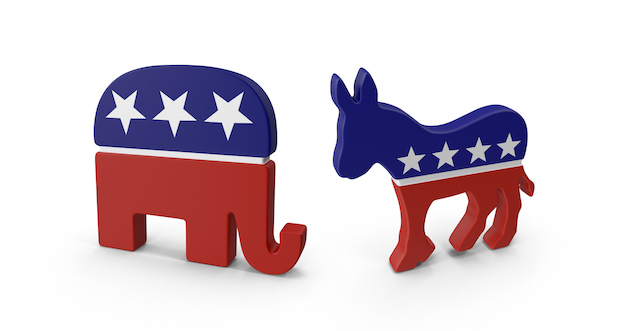Biden Congratulates His Administration on Expanding Federal Employee Unions
President Biden has issued a self-congratulatory statement on this topic:
Agencies act to remove barriers to worker organizing, create good-paying union jobs, and the number of Federal Government employees in a union increases by nearly 20%
The White House statement reads: “Since the Office of Personnel Management (OPM) began working with agencies to better inform federal workers of their right to join a union, nearly 80,000 workers have done so.” (Emphasis in the original.)
The statement is correct. OPM has done a great deal to help unions gain new members and obtaining representation rights for larger numbers of federal employees.
One of the biggest steps taken by OPM to help federal employee unions was to pull together in one location a search engine with the ability to locate agencies with employees that are eligible to organize but have not voted to have union representation. The intent and practical result of this change by OPM was to enable union organizers to easily identify where to focus their organizing efforts.
Here are the other steps the administration has taken to help federal employee unions recruit new members:
- Include in all job announcements whether the position is a bargaining unit position
- Include in all job announcements for bargaining unit positions the name and local number of the union that represents that position
- Involve unions in the new employee orientation process
- Provide new bargaining unit employees with information on their workplace rights under the Federal Service Labor-Management Relations Statute (FSLMRS) during new employee orientation
- Provide this FSLMRS information to employees on a quarterly or biannual basis
- Highlight employees’ rights to join a union and include union contact information in any notification to employees regarding their rights under the FSLMRS.
Role of Federal Employee Unions in Government
Federal employee unions spend time and money during elections, usually to try and elect Democrats. While few presidents, if any, have been as vocal or taken the actions President Biden has taken with regard to federal employee unions, Democrats have not always been supporters of federal employee unions.
President Franklin D. Roosevelt was a Democrat from New York. He favored unions for private sector employees and signed the National Labor Relations Act into law. In 1937, two years after signing this new law, this is what he wrote about federal employee unions:
All Government employees should realize that the process of collective bargaining, as usually understood, cannot be transplanted into the public service. It has its distinct and insurmountable limitations when applied to public personnel management. The very nature and purposes of Government make it impossible for administrative officials to represent fully or to bind the employer in mutual discussions with Government employee organizations.
This changed with the election of John F. Kennedy. President Kennedy issued Executive Order 10988 in 1962, giving federal employees the right to be represented by a union. Executive Order 10988 was effectively replaced by President Richard Nixon‘s Executive Order 11491 in 1969 which changed some of the provisions of the Kennedy Executive Order.
The Civil Service Reform Act of 1978 codified the federal labor relations program. That law is still in effect although with varying interpretations of its contents as administrations come and go.
Membership in Federal Employee Unions and Private Sector Unions
According to the Bureau of Labor Statistics, 1.1 million, or about 28.2% of federal employees were represented by unions in 2022. According to AFGE, about 57% of the non-postal federal workforce, or 1.2 million employees, are represented by labor unions. Perhaps both figures are correct depending on the filters used.
In either case, the percentage of employees represented by unions in the federal government and in state and local government are much higher than in the private sector.
The percentage of American workers who are members of labor unions dropped in 2022 to the lowest level ever recorded in the 40 years the government has tracked this information. Considering how friendly the Biden administration has been with union officials, this decline would surprise many people. Outside of government, increasing numbers of Americans choose not to join a union.
According to BLS, the union membership rate was 10.1 percent in 2022. That is down from 10.3 percent in 2021. In 1983, the first year where comparable union data are available, the union membership rate was 20.1 percent.
The union membership rate of public-sector workers (33.1 percent) continues to be more than five times higher than the rate of private-sector workers (6.0 percent).
Why Are Governments and Private Companies Different?
Why the difference in membership rates in private sector corporations and government? A recent book offers this reason for the differential:
“Their incentives are different, because public workers are not at risk of overreach. If a private union asks for inefficient work rules, the company will go out of business or move to another place and they will lose their jobs. But government can’t move. There’s almost no limit to what politicians can take from the public purse and give to employees, as long as each offer is small enough to evade headlines. So workers get incremental benefits that add up to insolvency, like zero healthcare premiums and mass exemptions from vital job duties.”
There are more limitations on federal employee unions than on many state and local government unions. With some exceptions, federal employee unions cannot negotiate on salaries or the cost of health insurance benefits. Unions can, and do, negotiate procedures that largely prevent federal employees from being fired or, at the very least, result in limiting the number of federal employees who are successfully fired.
As noted in this article, being a federal employee is a virtual guarantee of secure employment. One-quarter of 1% of federal employees were fired in 2021 and 64% of employees in an OPM survey indicated their agencies do not deal effectively with poor performance. No doubt, this is helpful to employees who are less proficient and generally do not perform well.
Unions and federal employees generally support Democrats with their political donations. This financial clout does help those seeking elected office and, presumably, those donating the money expect results in some fashion for their political support.
The close ties of federal employee unions with Democrats generally does serve the interests of unions and politicians. The money flows to Democrats from the unions and, as can be seen from President Biden’s latest press release, there are favors provided to the unions.
It is not always in the best interest of employees, as sometimes occurred with the preferences of federal employees not to be required to receive a Covid vaccination despite the political allegiance of unions to the administration.
And, while President Roosevelt’s political instincts may have been accurate regarding the desirability of unions representing government employees at all levels of government, that issue has been settled along with some of the predicted financial problems that have occurred in government budgets.





